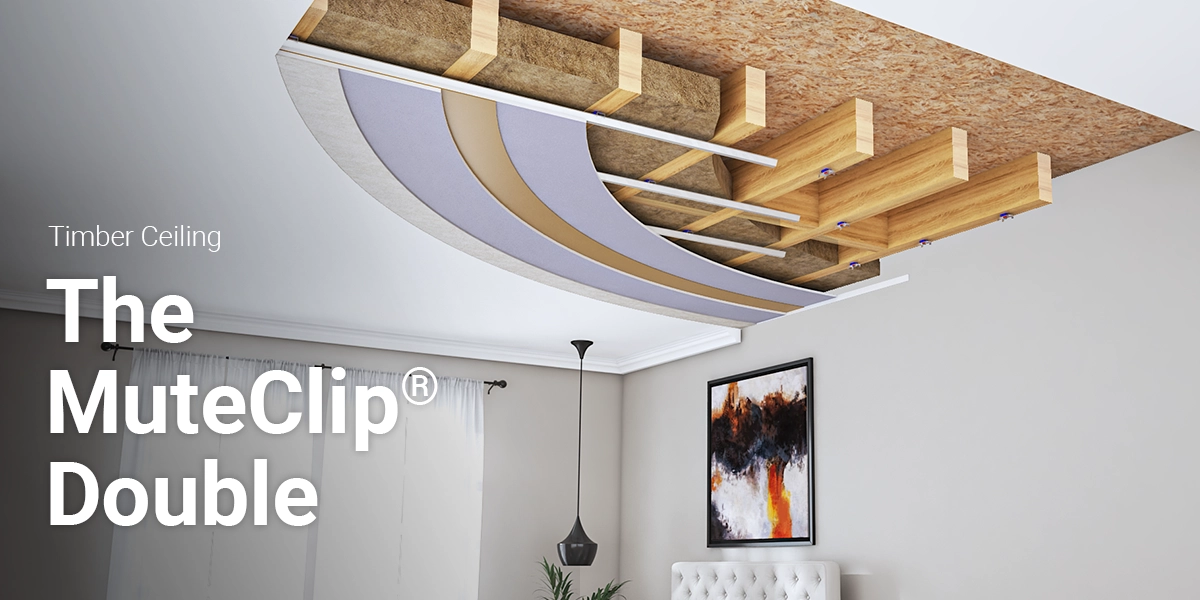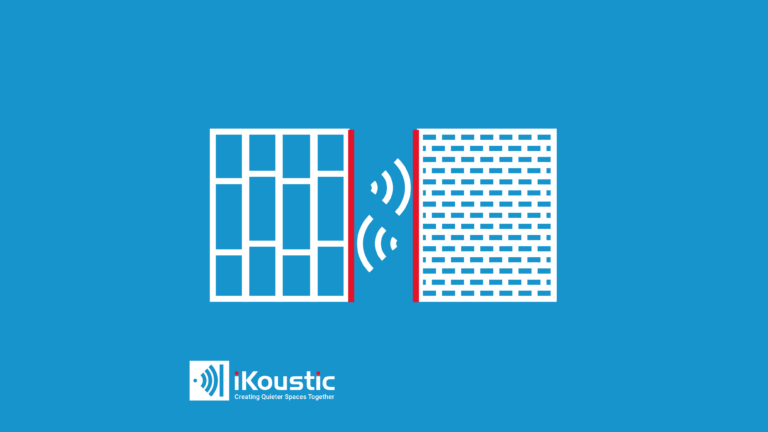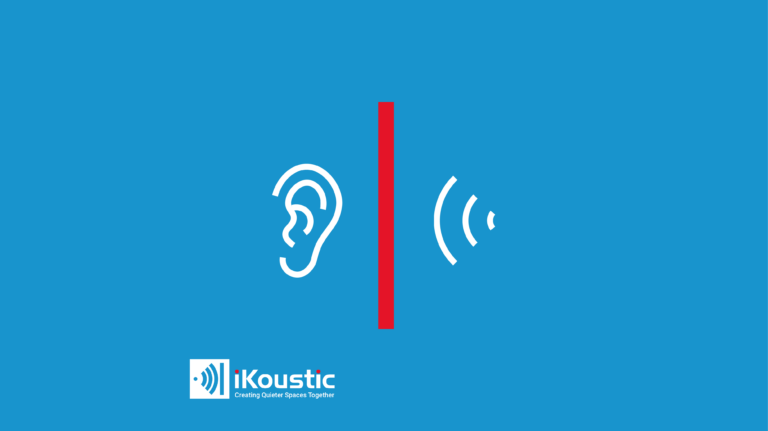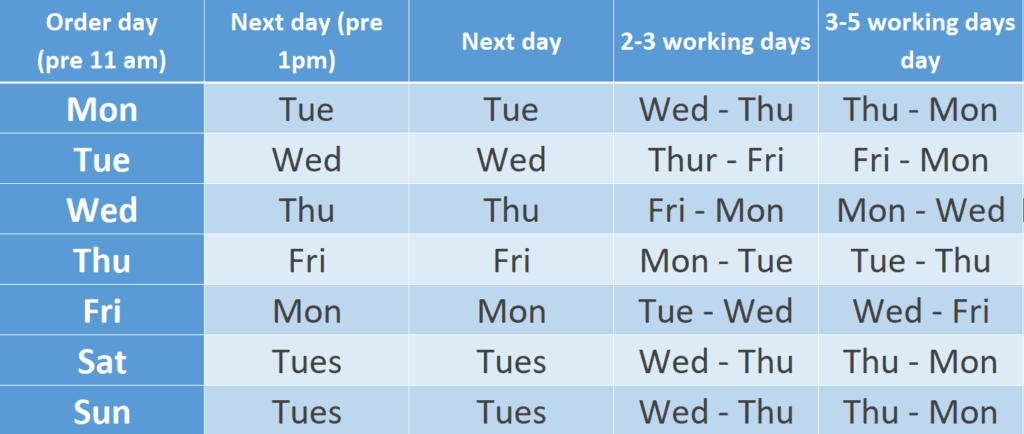Resilient bar ceiling (Why we don’t use them anymore)
Building a resilient bar ceiling is a common way to soundproof a ceiling, however, we no longer recommend the use of or sell a resilient bar ceiling solution. In this article, we’ll explain why this is and what we recommend you use instead. Firstly, it’s useful to understand how a resilient bar ceiling is installed.
How a resilient bar ceiling is usually installed
Resilient bars are metal channels that are fixed to ceilings and walls for plasterboard and other materials to be attached to. One long edge of the channel is fixed into the ceiling, (see below), and the other long edge is left unattached. This unattached side absorbs vibrations that are transferred from the ceiling to the new plasterboard. For a long time, they were the industry standard and are certainly capable of soundproofing. However, installing them correctly can be harder than it originally looks.
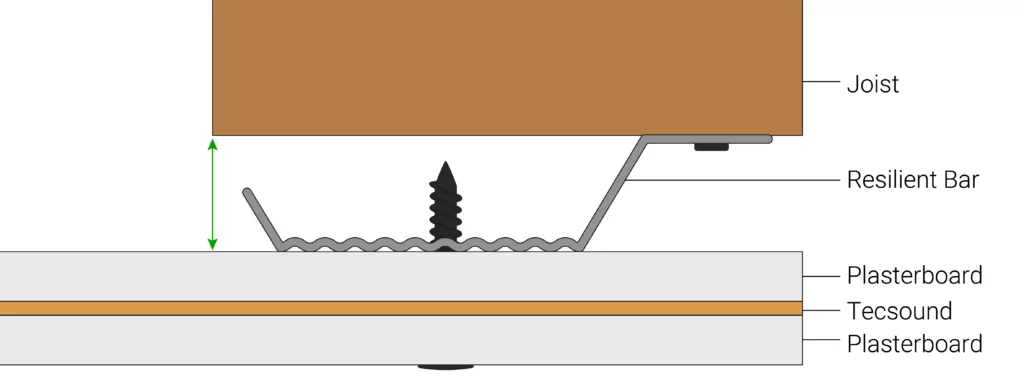
The problems with resilient bar ceilings
A simple (and in our experience common) mistake is to fix the new plasterboard all the way through the resilient bar and, consequently, through to the existing ceiling. This ‘short circuits’ the resilient element of the system, meaning the sound vibrations are able to travel through into the new ‘soundproofed’ ceiling.
This could lead to failure of pre-completion testing and expensive remedial works. As most resilient bars have a depth of just 1.7 cm, this leaves a very low margin for error. Across hundreds of fixings in just one job, it could easily be fixed through to the ceiling, thus transferring sound back into the room. In short, this error completely defeats the purpose of using a resilient bar ceiling in the first place!
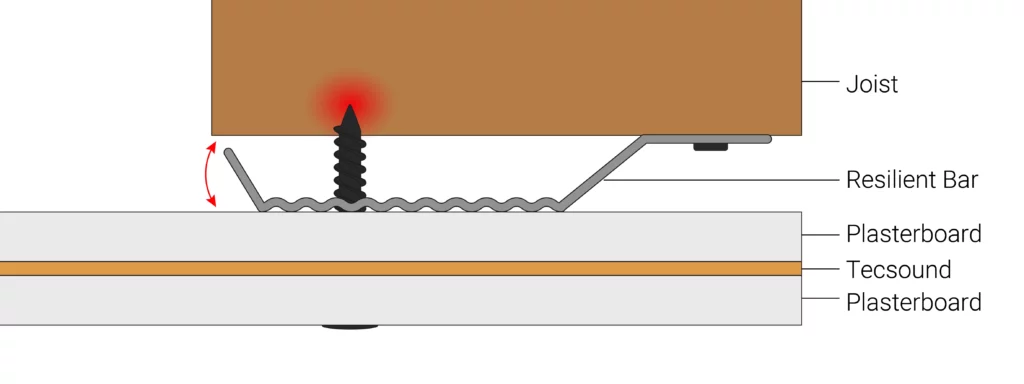
The alternative to a resilient bar ceiling.
‘Clip and channel’ systems have become a lot more popular than traditional resilient bar ceilings with soundproofing experts. They offer considerably better performance and a ‘fool-proof’ installation technique. Firstly, the MuteClip is installed on the ceiling joists, and then channels are (as the name would suggest) easily clipped into place. This system is now ready for plasterboard and other high-density materials to be added.
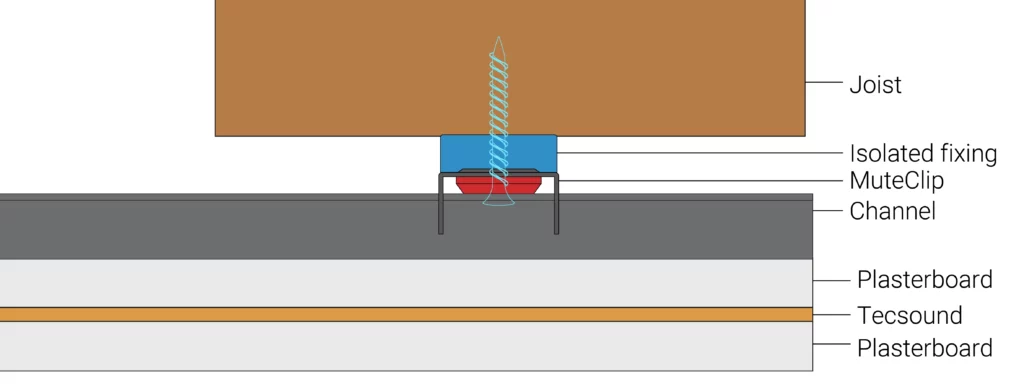
Comparing resilient bar ceilings with MuteClip
We compared our MuteClip Double ceiling soundproofing system with a resilient bar ceiling of the same make-up sold by a competitor. The resilient channel option lost out on a 9dB possible reduction compared with the MuteClip option. For context that’s nearly twice as much noise able to transfer through the ceiling.
The MuteClip option is more expensive, at the time of writing the materials for our fictional project were 17% more expensive compared to the resilient bar option. This may seem a pricey upgrade but you are getting nearly double the sound reduction and the confidence that you won’t need to take the ceiling down again!
How does MuteClip Work?
MuteClip acts as an array of mini shock absorbers that a new frame can be installed into. The screws which connect the MuteClip to the ceiling joist, are isolated from the clip with two layers of variable-density silicone. This helps decouple the channel frame from the original ceiling, or, simply put, reduces the sound vibrations from existing wall to screw.
Once the clip and channel have been installed, you can fix the plasterboard into the channel without the risk of flexing and short-circuiting the system. If space is at a premium you can use the MuteClip LP fixed into the joists for an almost seamless connection from structural joist to plasterboard.
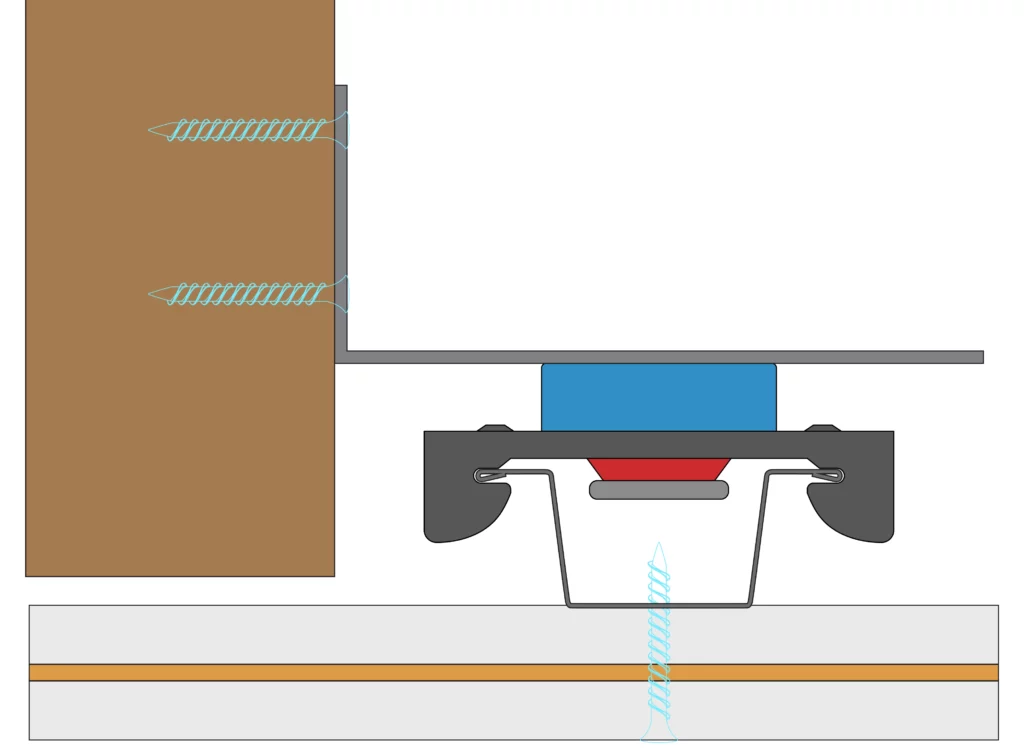
How to install MuteClip (Video)
Here’s a quick video on installing a MuteClip system. We’re still working on a ceiling video but the basic principles remain the same.
Conclusion
Should you use resilient channels on your ceilings?… perhaps… if you are a skilled installer, budget is tight and you only need a small amount of noise reduction. We recognise our bias here, considering we manufacture the MuteClip! However, these products were designed to create a superior ceiling soundproofing option to what was on the market (resilient bars) and after the number of failed resilient bar ceiling systems we saw, we took the decision to not sell or recommend resilient bar systems at all any more.
We hope this article helps people understand why we came to that decision! If you would like to know more about MuteClip Systems click here or contact our technical team today who will be happy to help!.


